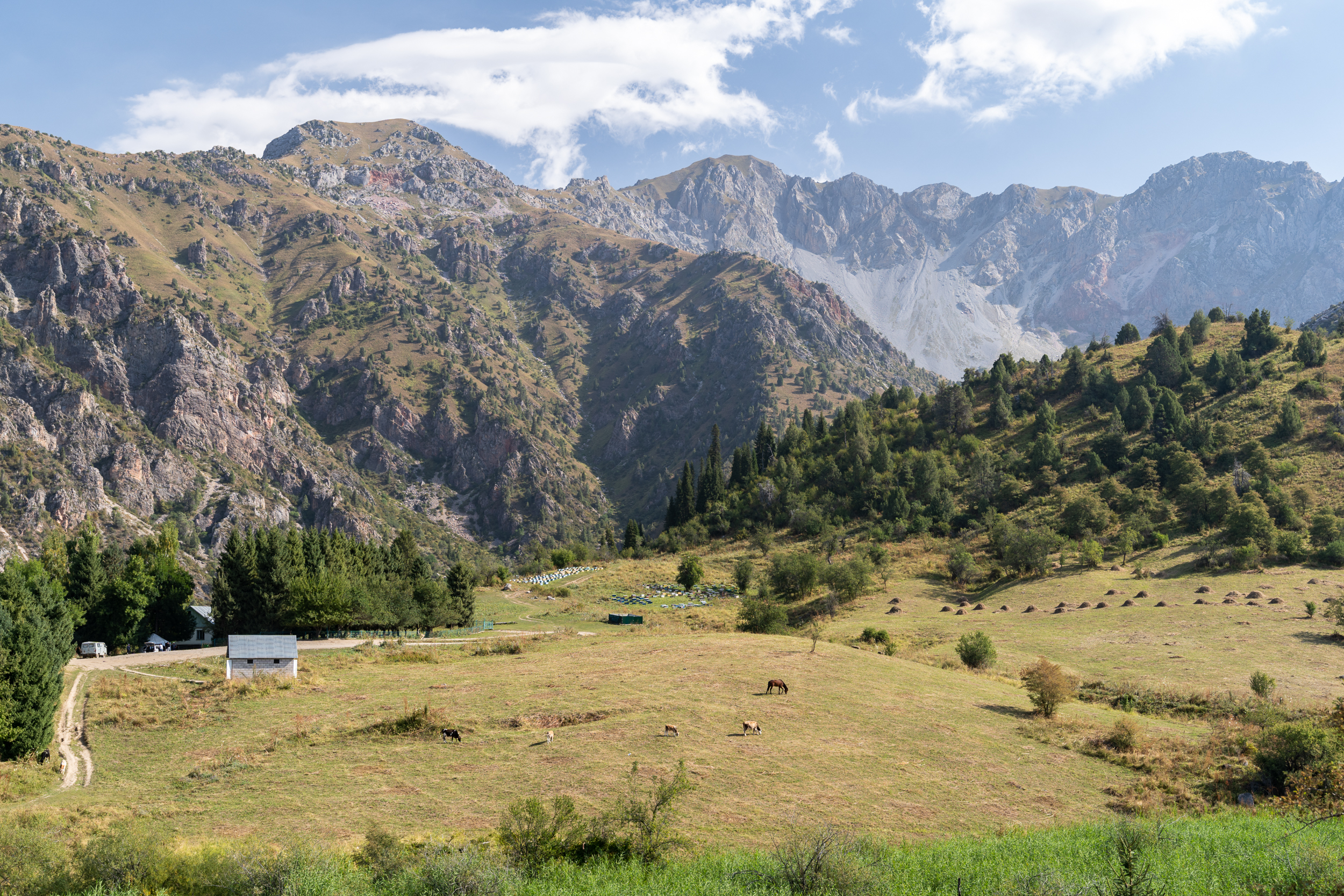Greener pastures for livestock farmers in the Kyrgyz Republic
An innovative project in the country’s rural south is helping farmers to focus on the quality over the quantity of their cattle to improve the sustainability of agricultural land

For farmers in the Kyrgyz Republic, keeping livestock is a vital source of income. Over the last 20 years, the cattle population in the country has increased by 60 percent, and whilst this has improved the socioeconomic standing of farmers and their families, this sharp growth has also contributed to the degradation of pastures, impacting the sustainability of this precious agricultural land. By shifting their attention to improving the breed of their livestock, Kyrgyz farmers are now focusing on quality over quantity to protect local pastures.
With funding from the Government of Switzerland, the Aga Khan Foundation (AKF) and Helvetas Swiss Intercooperation (HELVETAS) have been working with agricultural communities in the Alai and Chon-Alai regions of the Kyrgyz Republic through the Bai-Alai project to support this transition. By providing access to natural and artificial insemination services, the project enables farmers to produce half-breed cows which have a higher monetary value and can produce more milk than local breeds, in turn boosting income opportunities. This forms part of AKF’s broader enterprise development work in Central Asia to support farmers, producers and small business owners to strengthen their value chains and find lasting solutions to local challenges.
The ultimate goal of the Bai-Alai project is to reduce poverty in the Alai and Chon Alai districts through increased income and employment, particularly for women and youth, and access to insemination services is just one aspect of its efforts. Since its launch in 2013, the project has reached over 14,000 livestock farmers in the Kyrgyz Republic’s remote mountainous south.
Kubanych Turganaliev is a livestock farmer from Gulcho village, Alay District, Osh Oblast. He has been interested in improving the breed of his livestock for several years after noticing the impacts of having too many cattle on his land:
“The number of livestock is growing every year and there are not enough pastures to accommodate them. I can’t even see some of the pastures that I used to see as a child — they’ve degraded due to overgrazing. If we do not start to focus more on the quality of livestock rather than its quantity, we face the risk of losing our pastures.”
Kubanych Turganaliev, livestock farmer

Five years ago, Kubanych began to look for ways to reduce the number of livestock he keeps, meanwhile improving the breed. In 2018, he worked with a relative in the Kara-Suu District (another district in Osh Oblast) where he saw for the first time the benefits of crossbreeding cows. Kubanych learned that his relative had used artificial insemination and was keen to explore the availability of this service in his hometown of Alai.
He met with Bazarbay Begmatov, a veterinarian working with the Bai-Alai project who artificially inseminated one of Kubanych’s four cows. Despite having some doubts about this new method of breeding, Kubanych’s skepticism disappeared when a year later his cow calved a half-breed Aberdeen-Angus calf. Seeing this newborn calf, Kubanych was impressed with how successful artificial insemination could be; the following year, he worked with the Bai-Alai project to produce three more half-breed calves.

Mamatova Gulbara, Kubanych’s wife, was equally as pleased with the results. She explains why the ethos of quality over quantity reaps rewards for farmers and their families:
“Last year we sold a one-year-old half-breed Simmental calf at twice the price of local breeds. We now have a two-year-old Brown Swiss half-breed heifer that will be able to produce 18 litres of milk per day when she starts milking, as opposed to the average seven or eight litres produced by local breeds. When she calves, the milk sales will boost our income.”
Mamatova Gulbara, wife of Kubanych Turganaliev, livestock farmer
According to data collected by the Bai-Alai project, half-breed calves weigh on average 90 kg more than local calves, meaning that their sale price is much greater. In mid-2021, the cost of half-breeds in local livestock markets in the Kyrgyz Republic was around US$ 600, and the cost of local calves was around US$ 400.
In the coming years, Kubanych plans to reduce the size of his herd and improve the breed of his cows, “at the moment I have four cows at my farm, and if I keep two pure or half breed cows instead of four, the maintenance costs will be almost halved, but the benefits will be like keeping four cows”. Not only is Kubanych generating additional income through these alternative livestock management methods, but he is also using his new skills to motivate others to transition from quantity to quality in order to save the local pastures.
Learn more about the Bai Alai project in this video:

Thank you to Dilbara Kirbasheva and Aida Elkeeva from AKF Kyrgyz Republic for supporting this story.
The Bai-Alai project is funded by the Government of Switzerland through the Swiss Agency for Development and Cooperation (SDC) and implemented by Helvetas Swiss Intercooperation (HELVETAS) and the Aga Khan Foundation, through its subsidiary the Mountain Societies Development Support Program (MSDSP).


Support our work Your donations are helping us build a future where we all thrive together.